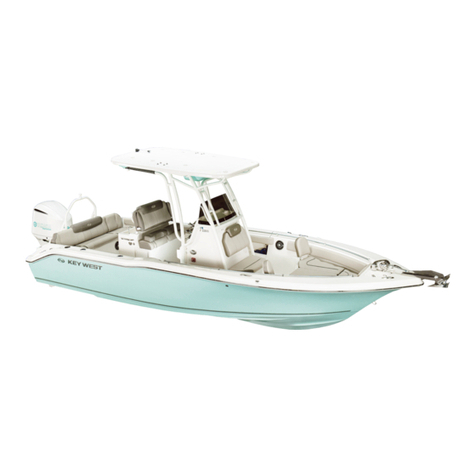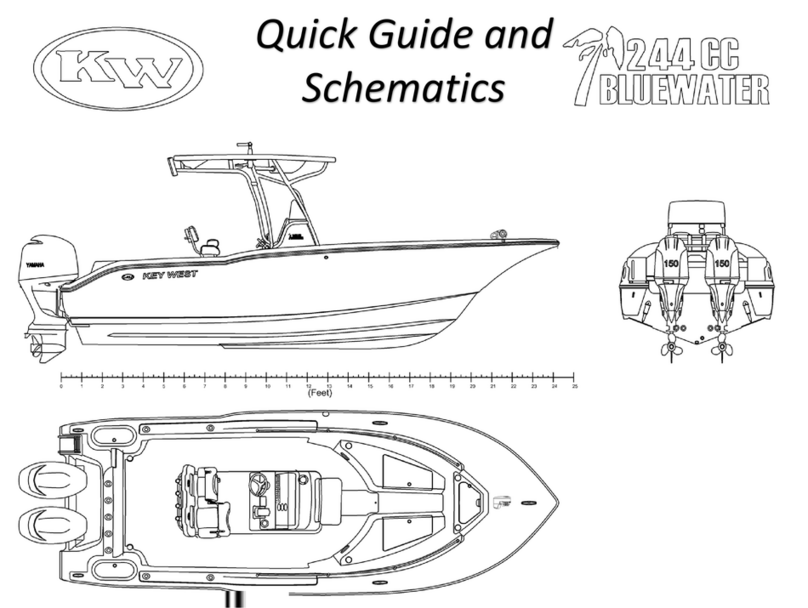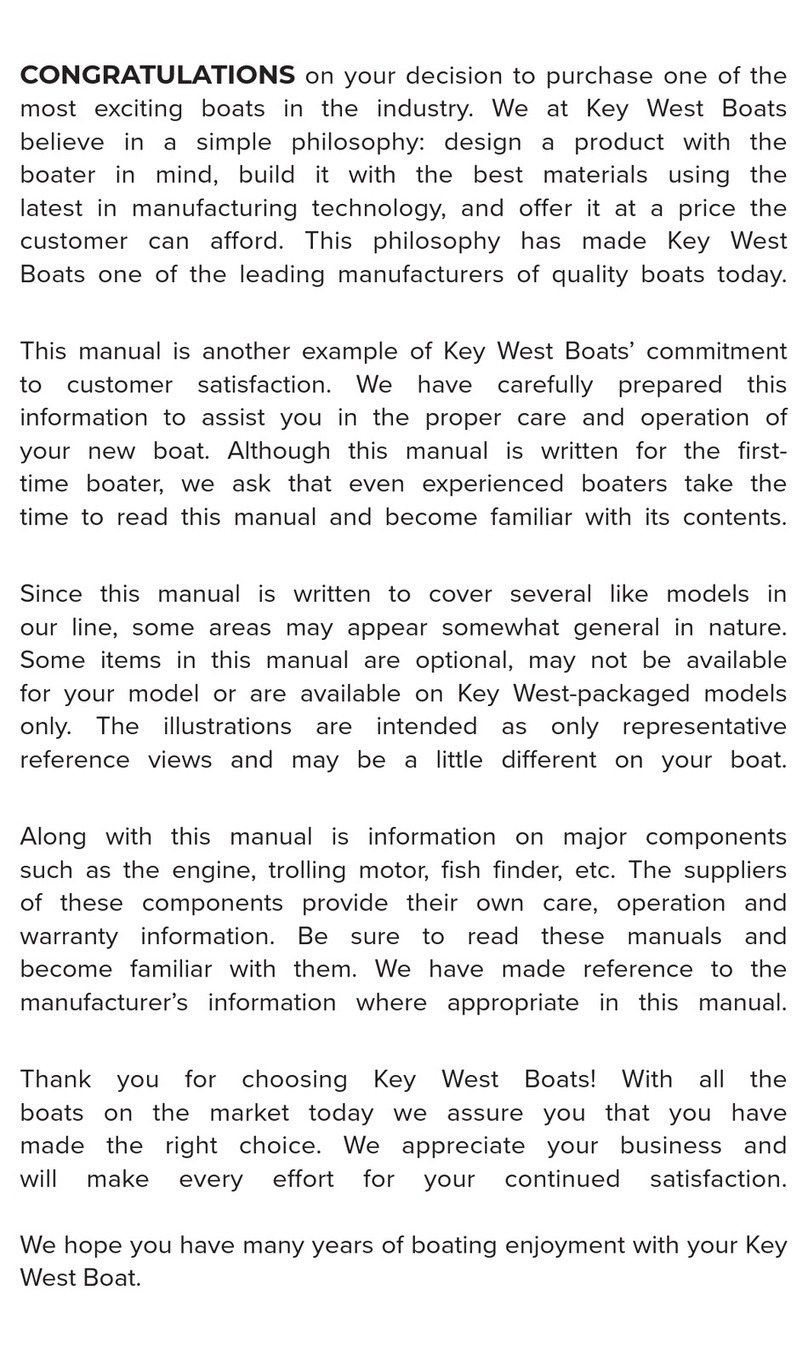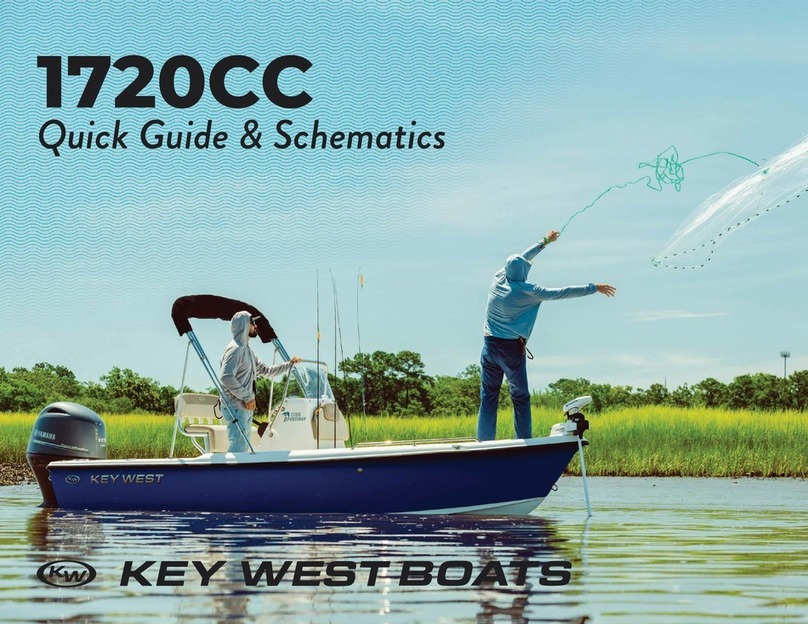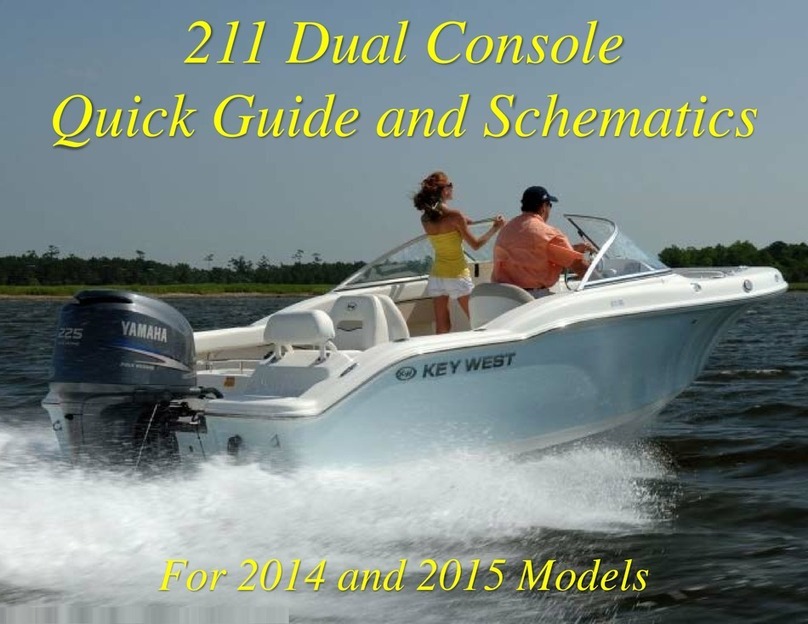Raw Water System (Livewells)
The 230BR features a raw water system for the aft and forward livewells, optional leaning post livewell, optional raw water washdown system and
optional aft livewell recirculating system.
Raw Water Supply
The 230BR features two high speed venturi pickups for raw water intake. The pickups incorporate a seacock. Before using the boat, it is important to
note the location of the seacocks and the means to achieve access to them. In the event of a rupture in a raw water line or pump that allows unrestricted
flow of water into the bilge, shutting the seacock will be critical. Seacocks should be checked periodically and the valves moved to verify operation and
unrestricted movement. If problems are found, they should be addressed immediately by your dealer.
Forward and Aft Livewell Fill System
There are two 800GPH livewell pump. They are directly mounted to the seacocks. The port pump provides raw water to the forward livewell. The
starboard pump provides raw water the aft livewell and the optional leaning post livewell. The pumps have a independent switches and circuit breakers
(See Electrical Schematics). To use the livewells, it is important to check and verify the seacocks are open. Failure to open the seacocks may result in
pump failure if the pump is run dry for an extended period of time. The livewell pumps have a pressure regulator that will shut the pump off if the
livewell fill valves are not open. If trailering the boat or using the boat after an extended period of downtime, it will be necessary to prime the pumps.
Before activating the pumps, make sure the livewell fill valves are open and than switch on the pumps. When the system is free of air, you can either
shut the fill valve in the livewells or shut off the pumps. It is important to check the livewell pumps annually and periodically spray it/them with a
corrosion inhibitor.
Aft Livewell Recirculating Pump (Optional)
The 230BR can be equipped with a recirculating pump for the aft livewell. A recirculating pump is a pump that pulls water from the bottom of the
livewell, aerates it and than returns it to the top of the livewell. The normal livewell system does this, however it is continuously replacing water by
drawing it from the raw water intake. In deeper water, this is the best way to keep water fresh and cool. However, when operating in shallow water
where the water is muddy or sandy, the recirculating pump allows you to recirculate and aerate clean water so that you are not drawing in dirty water
that could harm your bait. In the 230BR, the recirculating pump is mounted directly to the aft end of the livewell. The return from the pump is in the
top aft corner of the livewell. The pump is an 800GPH pump and has an independent switch and circuit breaker (See Electrical Schematic). The pump
will prime itself whenever water is above the intake screen of the pump. To use the pump, activate the switch. There are no valves to open. Water will
begin circulating immediately provided there is enough water in the livewell. Never run the pump without a sufficient amount of water in the livewell.
Running the pump dry for extended periods of time may damage the pump resulting in failure. The recirculating pump can be run in conjunction with
the aft livewell pump to provide increased circulation and aeration, however it is not necessary.
Leaning Post Livewell (Optional)
For anglers who want an additional and larger livewell, the 230BR can be equipped with a Livewell Leaning Post. The Livewell Leaning Post provides
great flexibility to anglers, especially tournament anglers because it allows the aft livewell to be used as release well if they wish, capable of circulating
water either via the livewell fill system and/or the optional recirculating pump. Raw water to the livewell leaning post is supplied via the starboard
livewell pump. A T-Connector is installed so that raw water can be used by both the aft and leaning post livewell. The livewell features a fill valve,
identical to the forward and aft livewell. This allows you to fill and use the aft livewell, the leaning post livewell, or both depending on your fishing
needs. To use the Livewell Leaning Post, engage the aft livewell pump and open the fill valve in the livewell.

